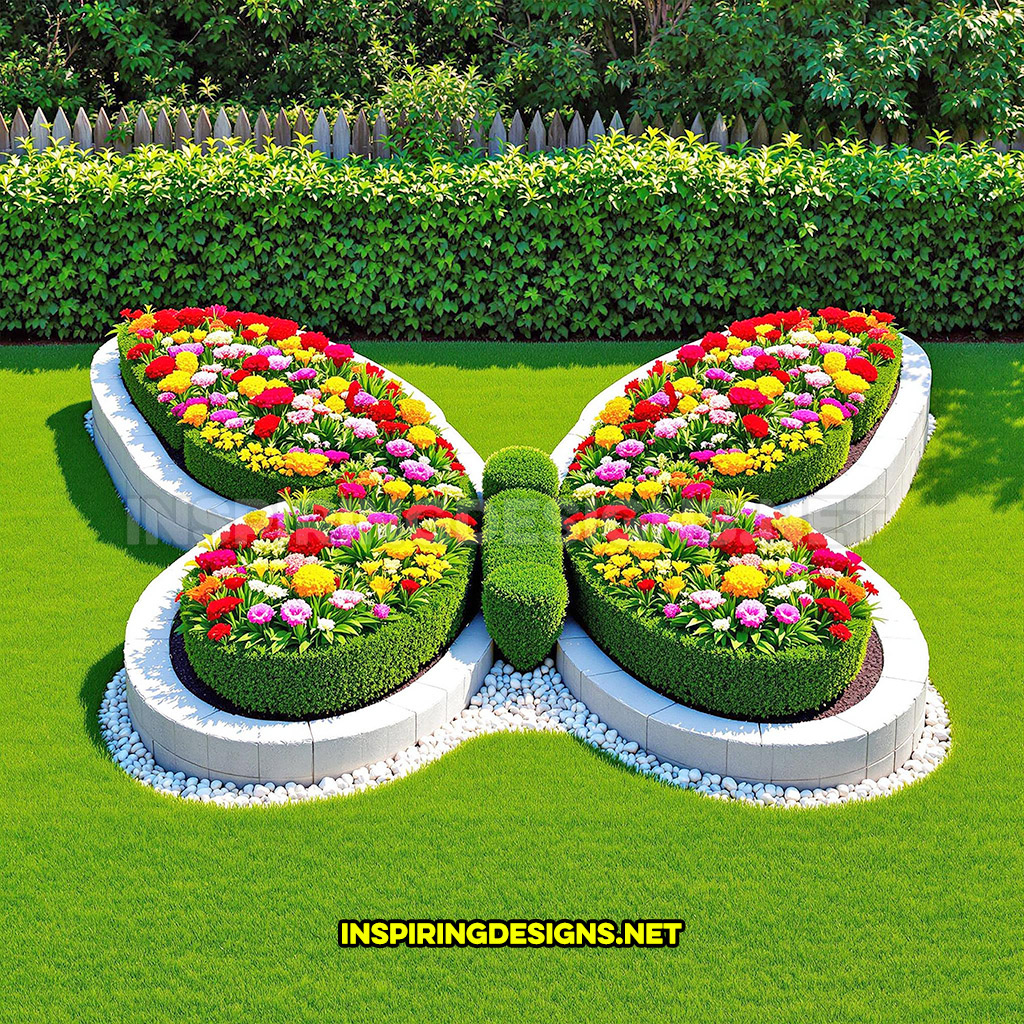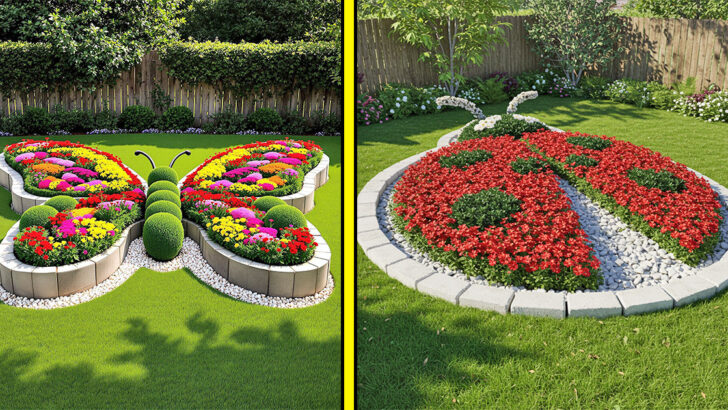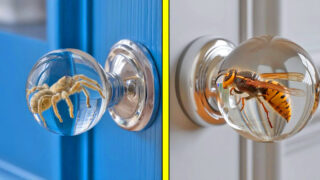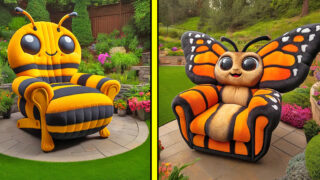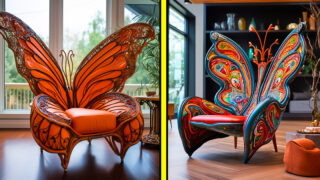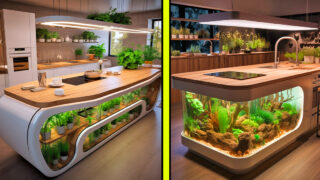Some gardens whisper. Others hum with life. But these? These shout joyfully from the rooftops—well, from the flowerbeds at least. Say hello to the wildly delightful world of insect gardens, where your backyard becomes home to giant ladybugs made of begonias, caterpillars sculpted from rainbow blooms, and butterflies that look like they flew straight out of a storybook.
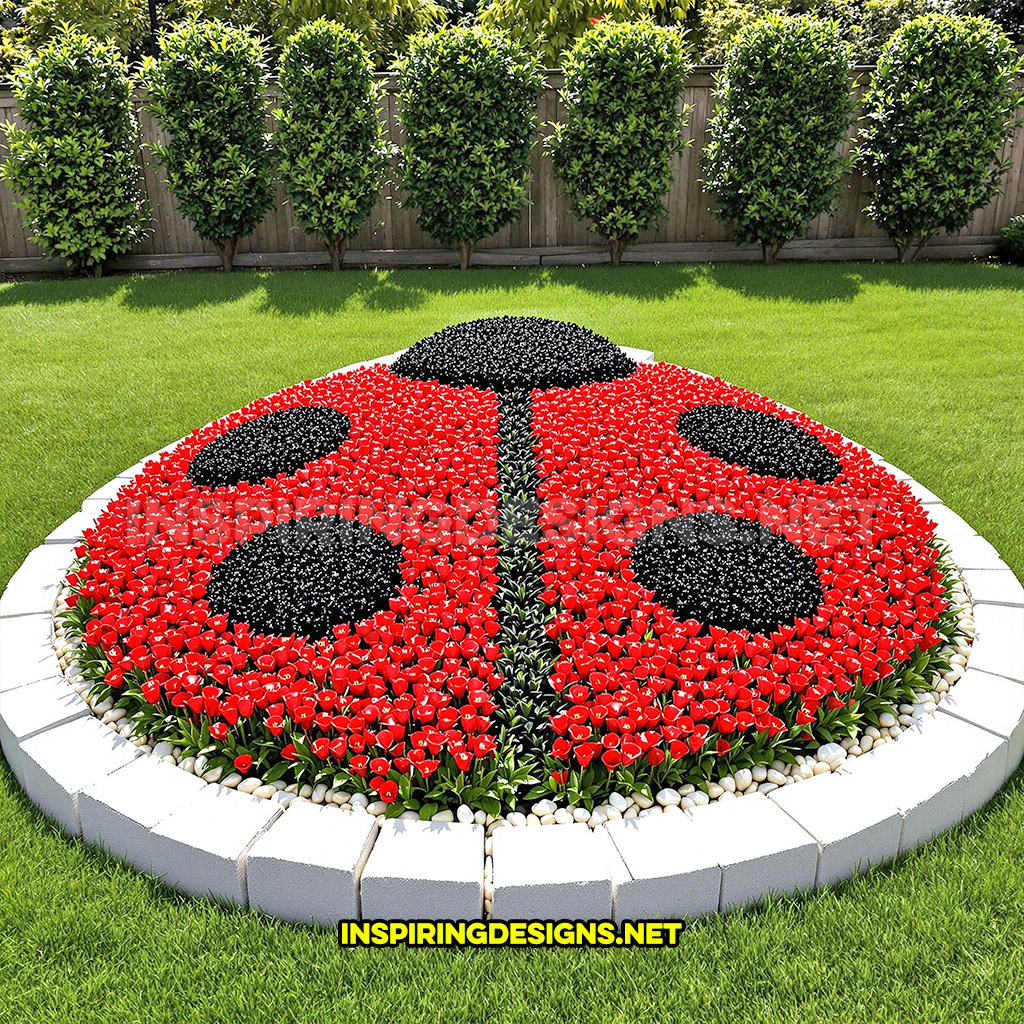
If gardens had personalities, these would be the extroverts of the landscape.
Floral Meets Fauna: Why Bug Gardens Are So Irresistible
There’s something deliciously cheeky about planting a bee… made of flowers. It’s nature imitating nature, with a big wink. These insect-shaped gardens blend precision horticulture, topiary techniques, and just a touch of madness—the fun kind.
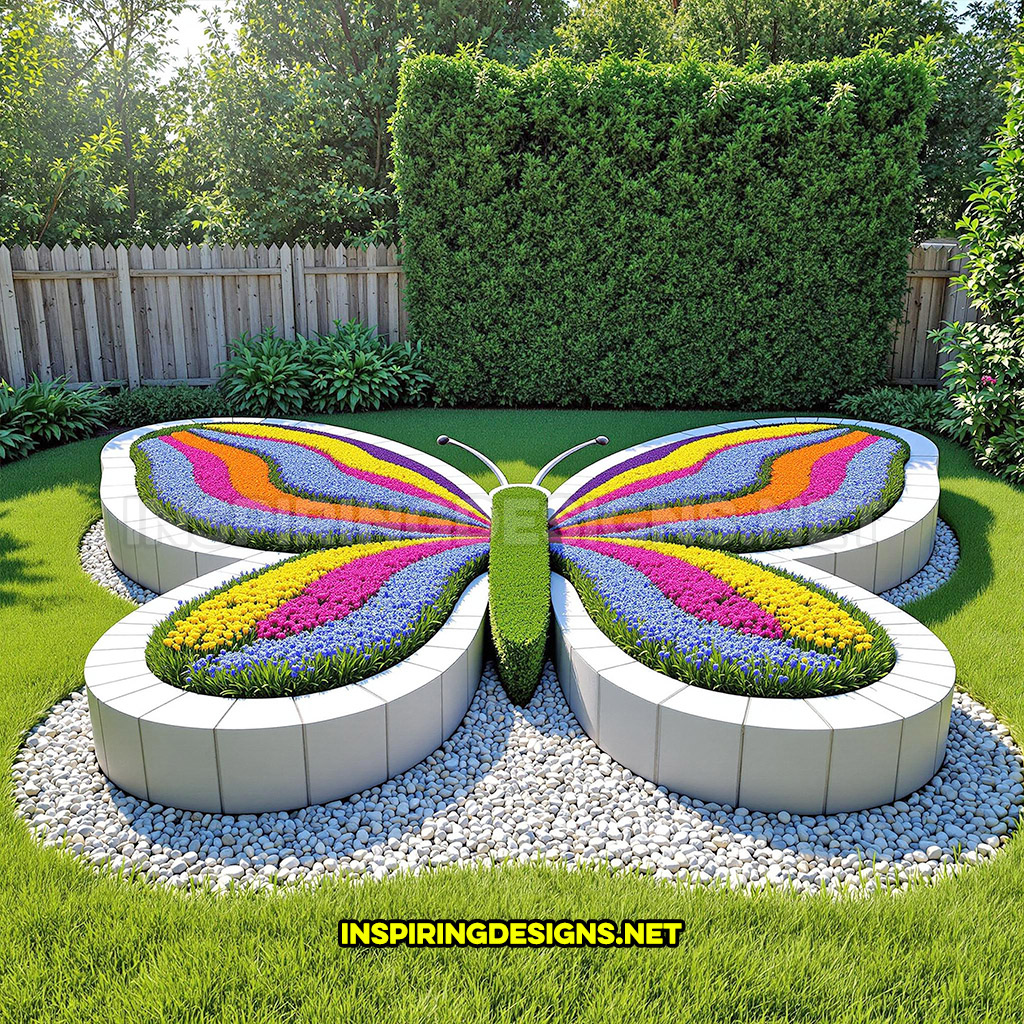
Let’s break it down: imagine a circular garden bed, outlined with crisp concrete edging, filled to the brim with vivid red begonias. Add in some glossy green foliage for spots, and boom—you’ve got yourself a ladybug so convincing, it might just start crawling (but thankfully, it won’t).
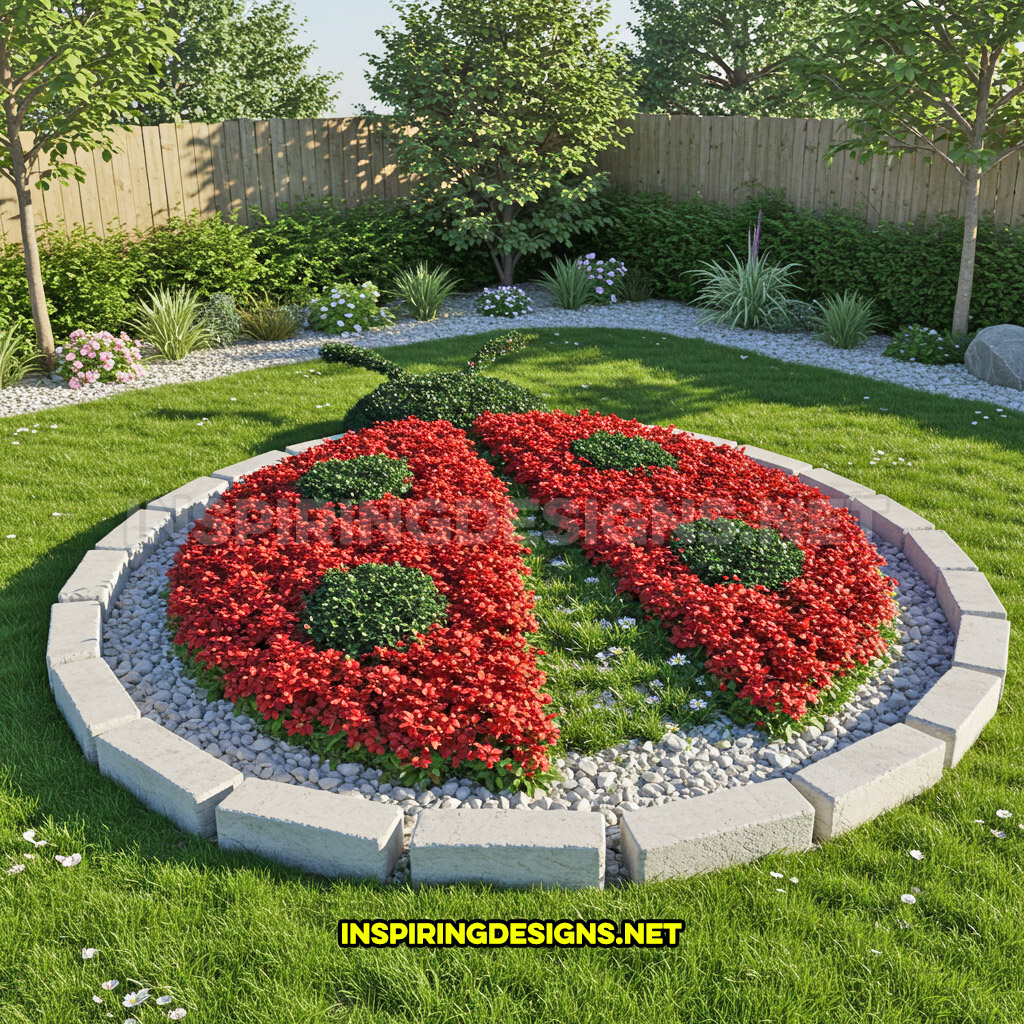
This isn’t just landscaping. It’s sculpture. It’s storytelling. It’s a wink to every kid who ever chased a butterfly across the lawn.
What’s in a Bug? Anatomy of an Insect Flower Garden
Each garden creature is a floral Frankenstein’s monster—in the best possible way.
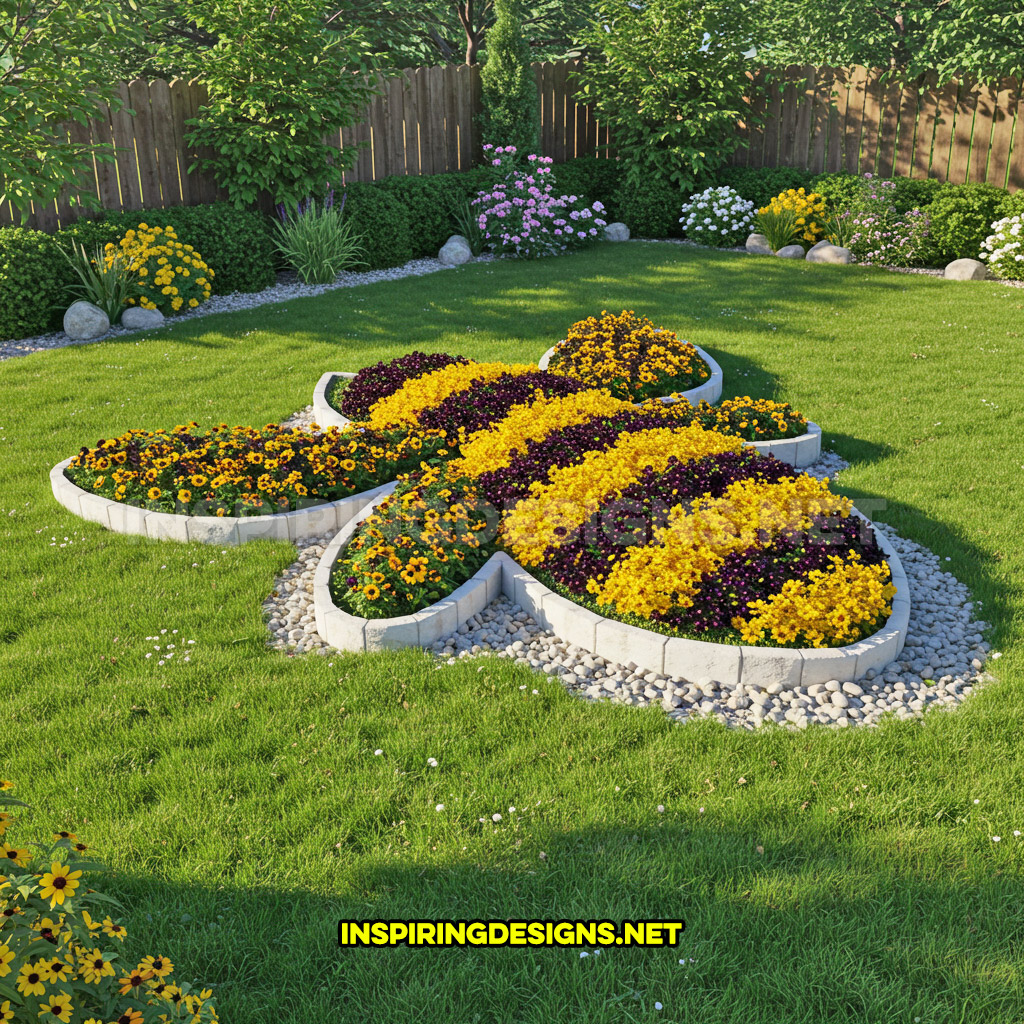
Take our caterpillars: a series of bright, flowering orbs, arranged like cheerful polka dots in a line. These can stretch up to 16 feet long and rise around 3 feet tall, each “segment” a densely-packed ball of blossoms in red, orange, yellow, and green. Their antennae? Often sculpted from weatherproof black PVC piping, topped with perky pom-pom blooms.
Butterflies, meanwhile, are all about the wingspan. Measuring up to 12 feet across, their symmetrical, color-blocked wings are filled with seasonal favorites like pansies, marigolds, and zinnias, with dark green foliage defining the body at the center. It’s symmetry with sass.
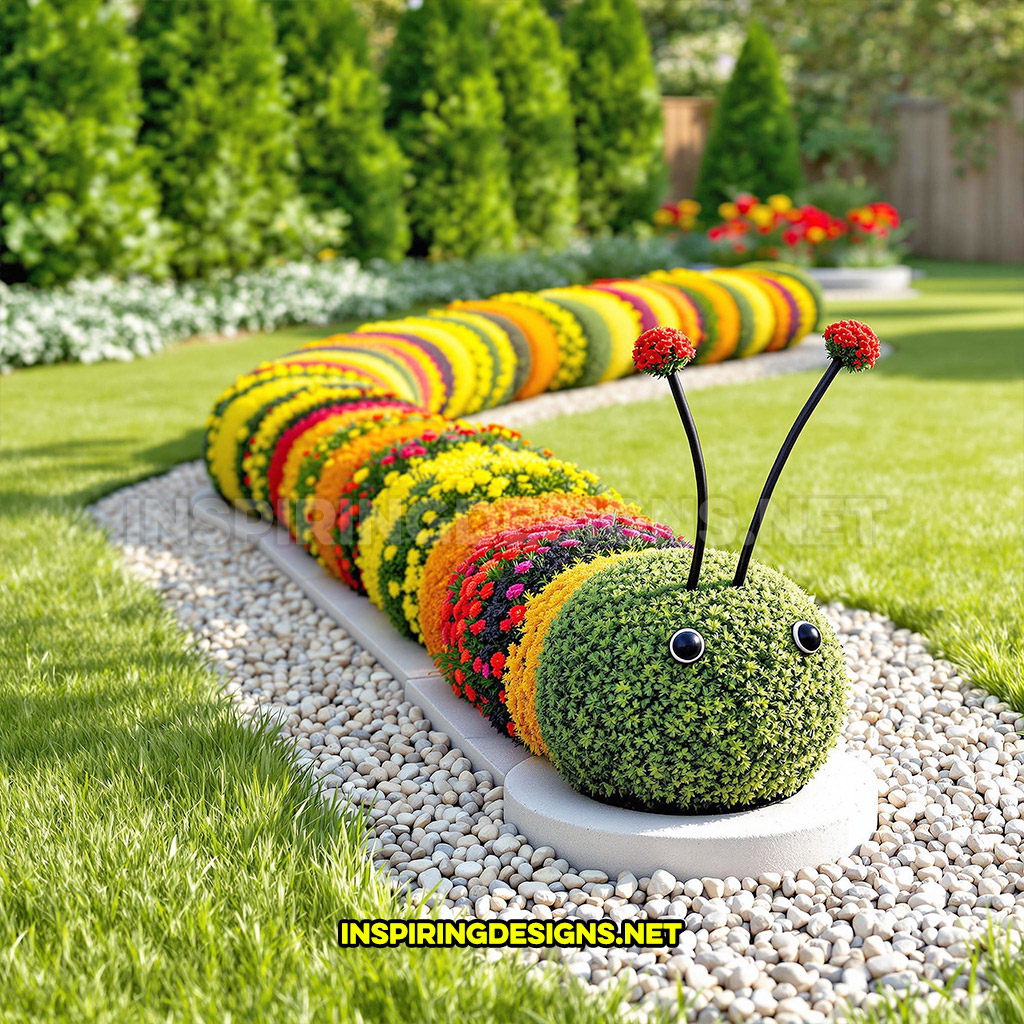
Bees buzz in with bold black and yellow stripes—often made with alternating layers of violas and marigolds—and those little antennae poke up like they’re ready to investigate your lemonade.
Structure Meets Softness: How It All Comes Together
Each bug garden is planted in a raised bed, giving a clean, sculptural edge to every design. These beds are usually 6–12 inches tall and bordered with white or stone-finish concrete blocks, which frame the design like a museum-worthy artwork (but one that lives outside and smells fantastic).

Between floral segments, white decorative pebbles or river rocks keep weeds at bay and boost the contrast. They’re also excellent at draining water, so no soggy insects here.
Some features get dimensional: caterpillars, for instance, are often topped with full green topiary balls that create a 3D effect, giving these little critters a lifelike bounciness that’s entirely endearing.
Not Just Cute: Function Meets Flair
Yes, they’re adorable. But these bug shaped gardens are also surprisingly versatile.
Whether nestled into the corner of a lawn, front and center in a courtyard, or peeking from a school’s outdoor learning area, these installations add more than visual appeal. They encourage interaction, curiosity, and even education. (Try asking a five-year-old to name the body parts of a butterfly when it’s made out of pansies. Suddenly, you’ve got a biology lesson they’ll never forget.)
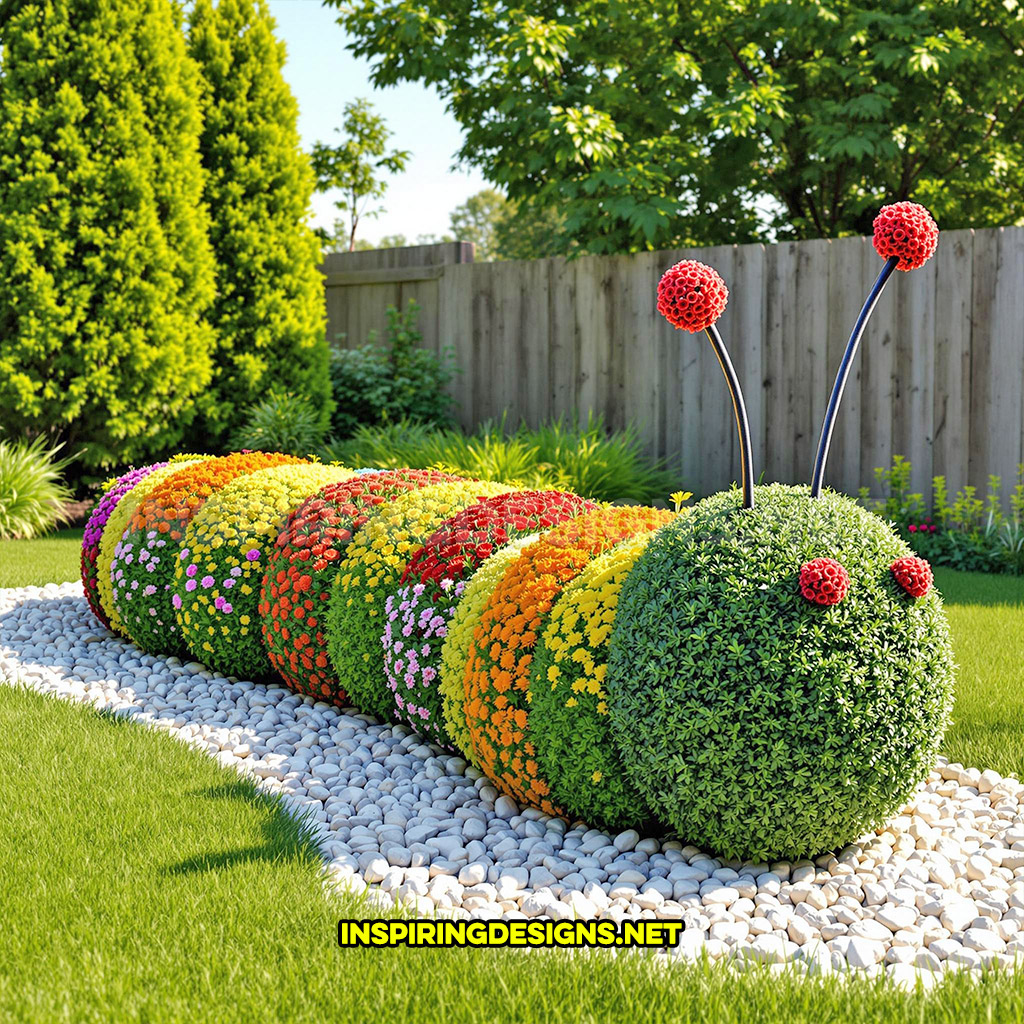
They’re also modular, which means you can easily install them piece by piece. Pre-shaped garden trays and cast beds make the setup delightfully un-fussy. Want to swap out the butterfly’s color palette next year? Just replant with different seasonal flowers.
Where These Bug Gardens Really Shine
It’s hard to find a spot where these vibrant installations don’t work. But some places seem practically made for them:
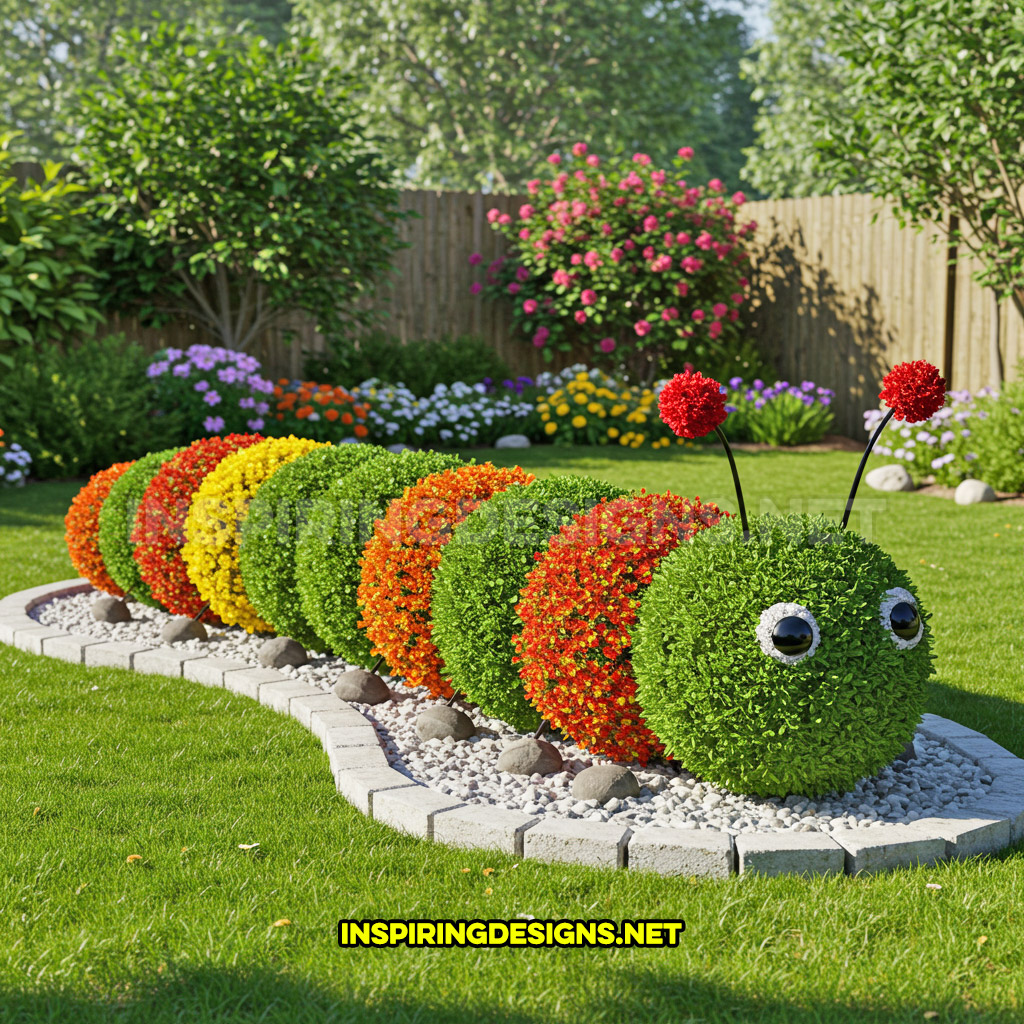
- Children’s gardens: Interactive, colorful, and non-toxic—win, win, win.
- Botanical parks: Elevate your flower game and get people reaching for their cameras.
- Residential yards: Add a playful focal point that screams “gardener with personality.”
- Eco-tourism spaces: A great way to combine fun with pollinator awareness.
- Event spaces: Swap traditional floral arrangements for full-on floral creatures.
Anywhere you need joy, really. They deliver it by the petal.
The Materials Behind the Magic
Every detail of these bug gardens is a thoughtful blend of whimsy and durability. You’ll typically find:
- Real flora: Begonias, marigolds, pansies, daisies, and zinnias are chosen for their shape, color, and resilience.
- Artificial elements: UV-resistant faux greenery fills gaps or boosts volume where needed.
- Frameworks: Hidden inside are landscape-grade aluminum or PVC structures, keeping everything snug and secure.
- Top finishes: White granite pebbles provide contrast and drainage.
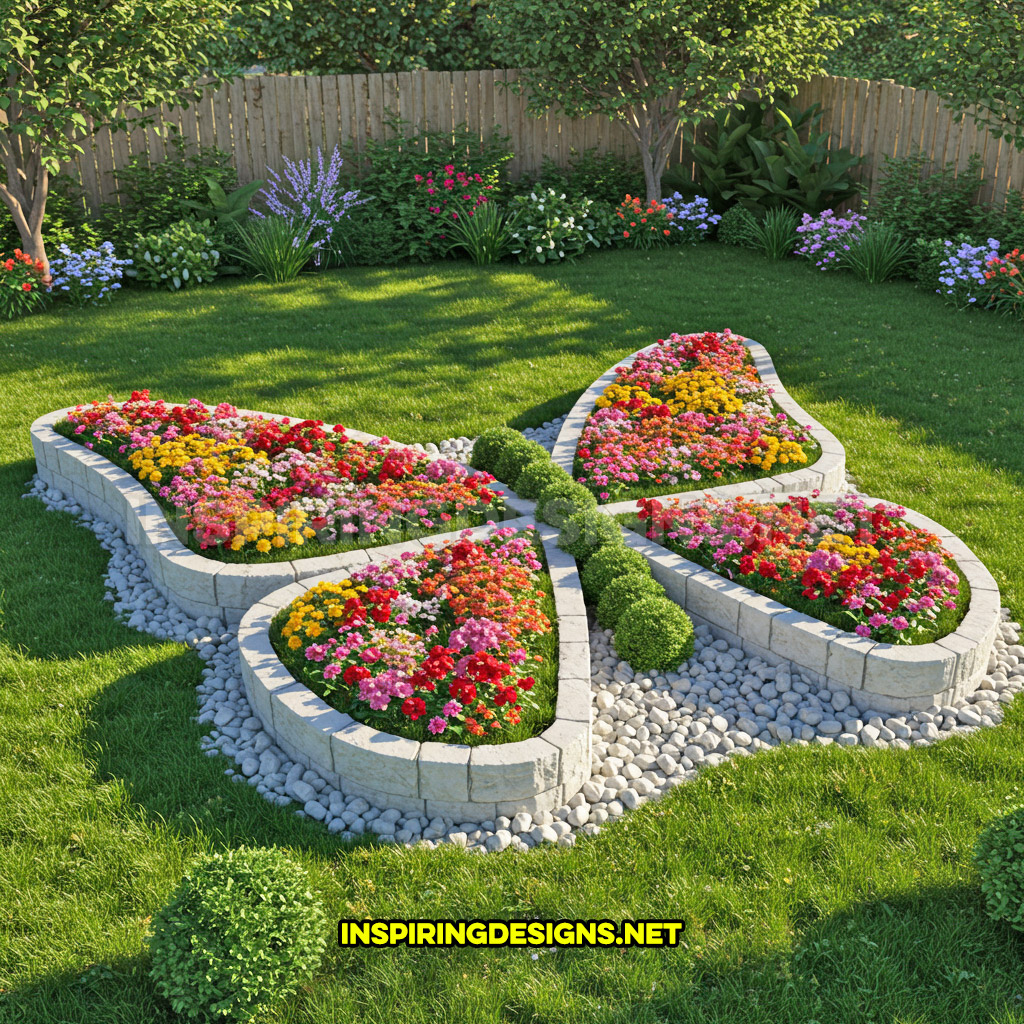
And for the googly eyes? Expect ceramic domes or resin sculptures—gleaming, expressive, and absurdly adorable.
Custom Bugs, Endless Creativity
While butterflies, caterpillars, bees, and ladybugs are crowd favorites, the possibilities don’t stop there. Want a neon firefly? Done. A pastel dragonfly? Absolutely. You can go realistic, or push boundaries with fantastical color palettes and creative mashups.
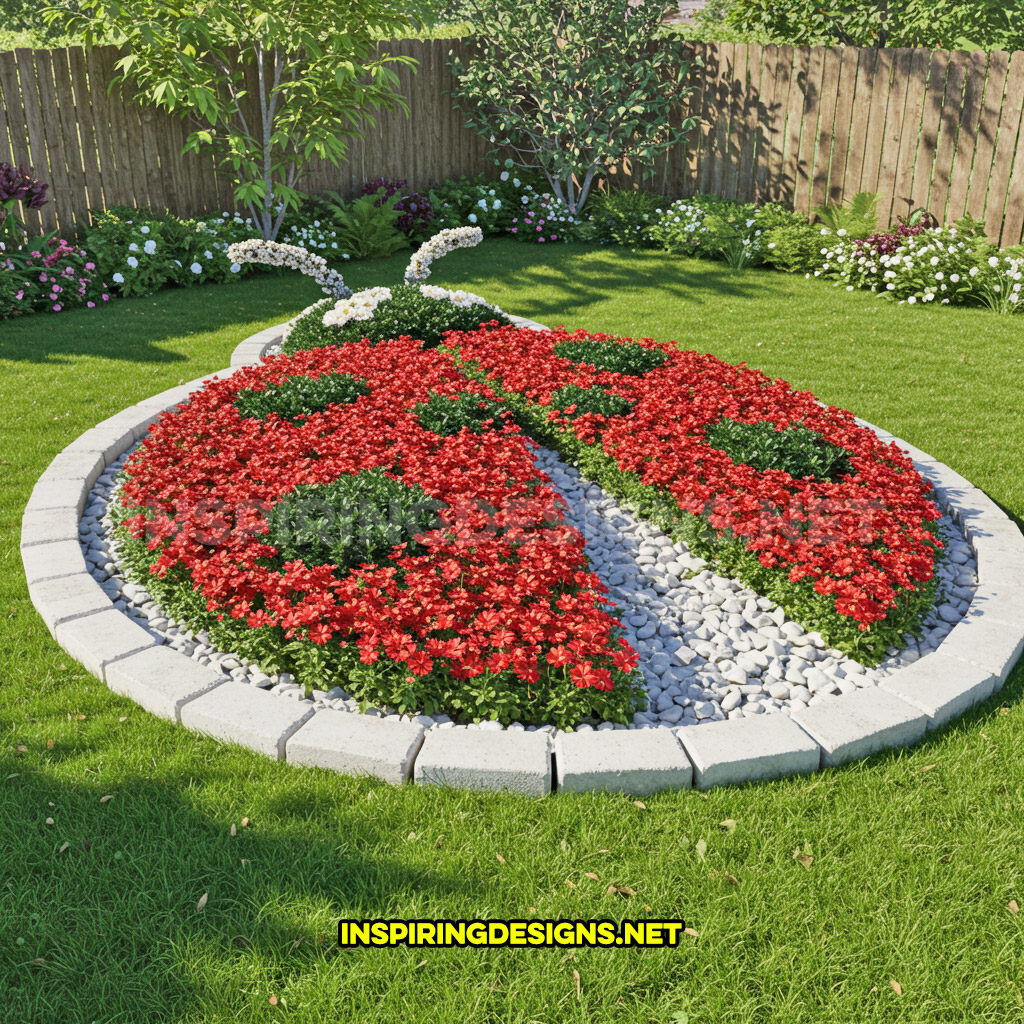
Think dragonfly wings made from glittery silver-leaf begonias. Or a beetle shell of deep violet pansies with lime-green highlights. These aren’t just gardens. They’re the botanical version of cosplay.
Build It, Grow It, Love It
Here’s how it all comes together:
- Precast bed frames are installed to define the insect’s shape.
- Modular planting trays are filled with flowers and greenery, chosen based on sun exposure and season.
- Details like antennae, eyes, and edging are added last, giving your bug garden its personality.
- Optional anchoring kits keep taller features safe from gusty winds or curious squirrels.
Maintenance is fairly easy—most plants are low-profile bloomers that require minimal upkeep, just regular watering, deadheading, and the occasional soil boost.
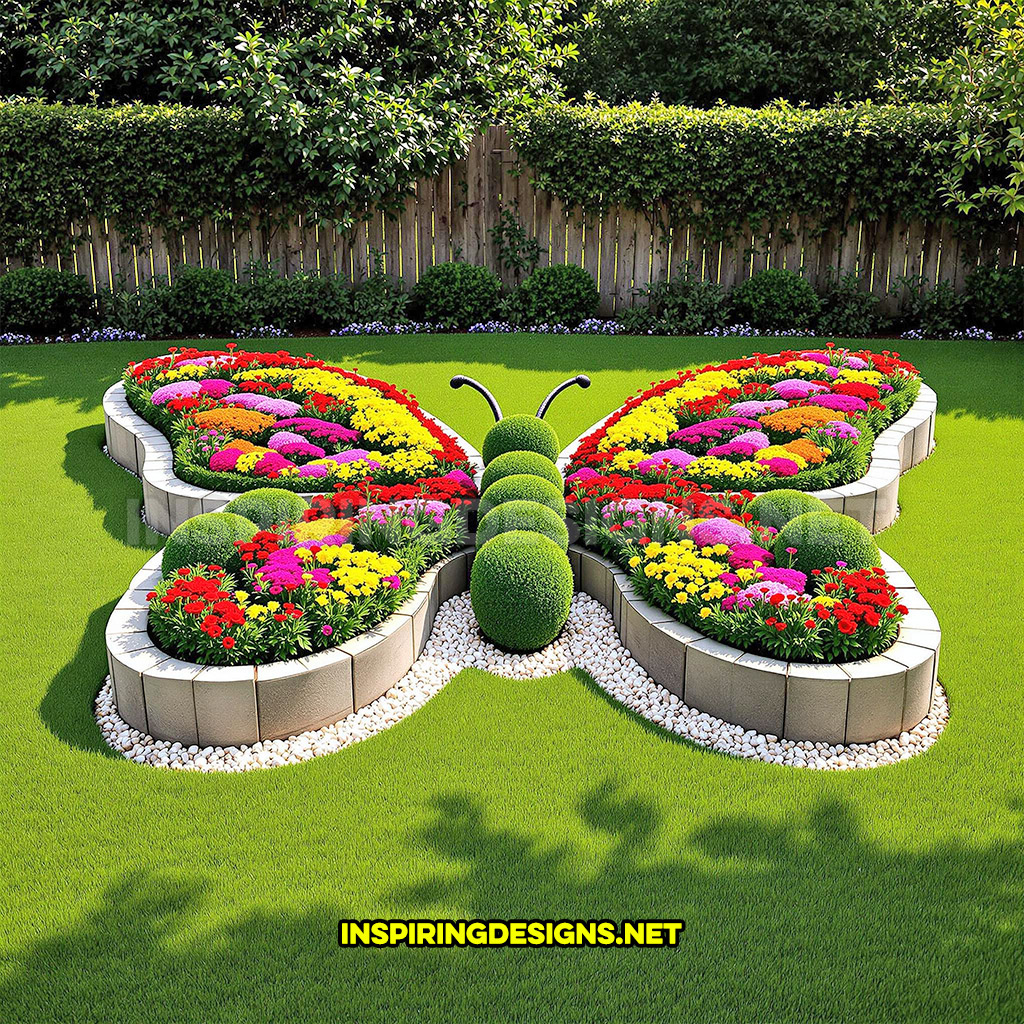
The Joy Factor
There’s a unique kind of joy that comes from rounding a corner in your garden and being greeted by a cheerful caterpillar. It’s equal parts art, gardening, and delight. These insect flower gardens become more than landscaping—they’re landmarks. Talking points. Memory-makers.
And in a world that sometimes feels a little too concrete and grey, who wouldn’t want to stumble upon a petal-covered butterfly or a bedazzled bee?

Summary of Features and Benefits
- Insect gardens include butterflies, caterpillars, bees, and ladybugs.
- Built with colorful blooms like begonias, marigolds, pansies, and zinnias.
- Structured with raised beds framed in decorative concrete or ceramic.
- Feature 3D elements like topiary balls and custom bug eyes.
- Use white pebbles for contrast, drainage, and design clarity.
- Antennae are made from weatherproof rods or sculpted rebar.
- Sized from 6 to 16 feet depending on insect type.
- Designed with weather-resistant, modular components.
- Easy to install and maintain using precast frames and modular trays.
- Perfect for residential, educational, and public garden settings.
- Custom color options available—from natural to whimsical.
- Great for kids, educators, garden designers, and curious adults.
- Combine art, landscaping, and play in one bright package.
